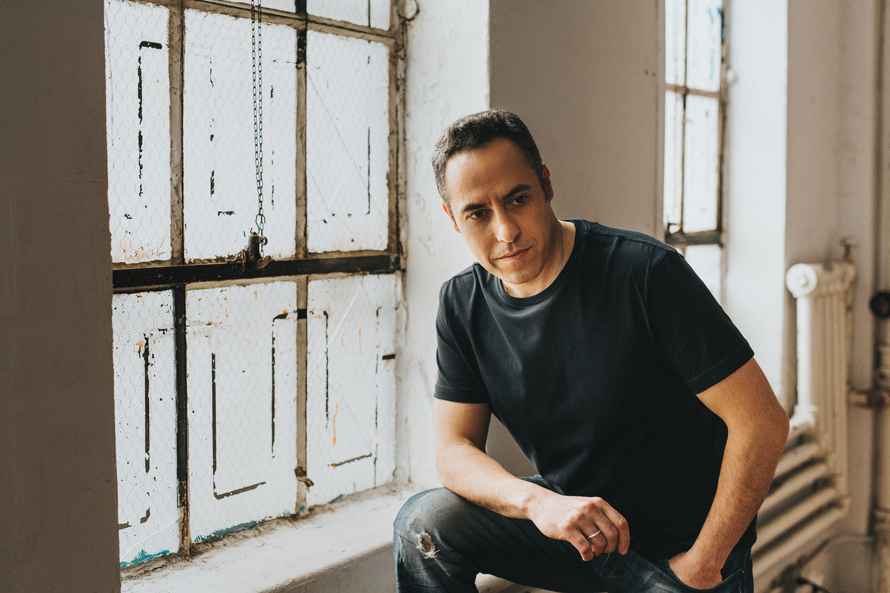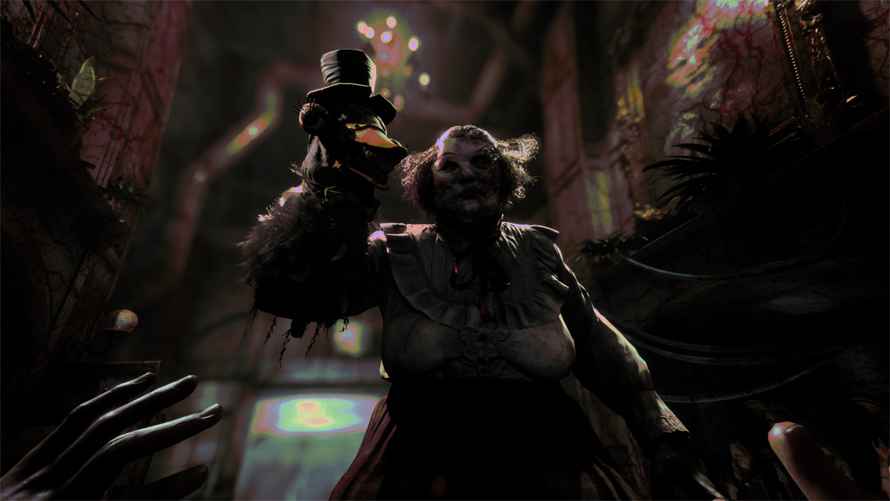Interview with Tom Salta
Spooky season might have officially ended way back on October 31, but for composers like Tom Salta, the chance to use music and sound to frighten audiences and gamers is a year-long treat. Whether in the medium of film, television, or videogames, horror presents a unique opportunity for composers to stretch the boundaries of their technique, discover new combinations of sounds, and find unexpected ways to create tension, shock, and terror through music. For example, Salta’s score for The Outlast Trials, soon releasing on consoles.
Tom Salta is in the top tier of media composers, having written the scores for dozens of popular games, including the Ghost Recon series, Halo, PUBG, Wolfenstein: Youngblood, and most recently, Deathloop. Like all great composers, Salta is a musical chameleon, able to adapt his style to the genre at hand. Still, all of his scores are connected by Salta’s superb craftsmanship, an ear for the unexpected, and incredible musical energy.
This brings us to one of Salta’s most recent scores, music for the co-op horror game The Outlast Trials. His music brings together a catalog of extended playing techniques, electronics, and more traditional orchestral textures. It’s a scary musical ride from start to finish. As he did with Deathloop, Tom was generous enough to answer a few questions for COGconnected about his music for The Outlast Trials.
Sounds by Extension
Extended techniques are cool methods of playing instruments in non-traditional ways. Horror soundtracks rely on them for unsettling textures. For The Outlast Trials, extended techniques were just the beginning. “When I compose, the instrument’s sound often informs the performance, especially with unusual sounds and treatments like the ones in The Outlast Trials. So, as I’m crafting the instruments and effects, I’m often composing at the same time.” Salta said.

“For the main theme (“Let the Trials Begin”), I spent a great deal of time getting the right combination of sounds and textures we were aiming for. The piano sound was just the beginning. The theme has lots of stuff in there…almost 200 tracks of various live orchestral, virtual, synth, and sound effects.”
Digital Magic
In part due to the cost of using live musicians, but largely due to the potential for creative sounds, composers often rely on digital sample libraries. This is true of Salta’s score for The Outlast Trials. “The main theme features a full orchestra augmented with many different sample libraries,” Salta said. “The rest of the score was primarily created with an extensive array of virtual instruments. Plus synths, and sound libraries, including many custom live recordings I have made over the years.”

Always Surprising
Composers working in games have a challenge. Players often revisit a game’s sections many times, especially when they fail or die. It would be easy for the music to become repetitious or lose impact. It’s a big consideration for Salta. “Knowing that players will often hear my music for countless hours in a game, I intentionally create lots of variety in the score. Repetitive music ruins the immersion, and I always pay close attention to ensuring the entire musical experience constantly evolves to keep sounding fresh and new. I relied a lot on Francis Brus, the audio director, to ensure enough variety as they play-tested the game.”
My Favorite Things
Every composer I know relies on craft and years of experience, more than elusive moments of pure inspiration. But of course, composers are often surprised by new ideas. And of course, they have their favorite moments in every score they create. Salta said that “The idea that surprised me the most was the first motif you hear in the main theme. (Da, dadum, da, da-da…) It came to me very quickly, which was a wonderful thing. For most composers, including myself, that doesn’t typically happen when you first sit down to create.”
For Salta, one specific area of the game really stood out. “The first track that comes to mind is “The Root Canal.” The entire map takes place inside a horrific amusement park ride that looks like the inside of a giant mouth. There are pools of blood, rotting teeth, bacteria-laden walls, rusting pipes, etc. I was inspired to create nightmarish “giant-mouth” sounds, dentist office vacuum sounds, and all sorts of disgusting noises using only my mouth through an extensive effect chain of all sorts of reverbs, pitch shifting, distortion, etc.” Salta’s giddy-with-wicked-fun came through. “I was pleasantly surprised with how it came out. I could have never created that with sound libraries.’

“On top of that, inside the ride are all these freaky-looking animatronic teeth and teddy bears. I couldn’t help but think of writing a disturbingly happy kid’s song heard as diegetic music sung by the figurines. Think of “It’s a Small World,” but in your worst nightmares”
Salta ended with a comment that nearly every composer expresses about their scores. Composing music for games is hard work, but exciting and creative, too. “Can you tell I had fun with this?,” Salta said. Listening to the score, it’s an easy “yes.”
Special Thanks to Tom Salta.
The Outlast Trials’ terrifying OST by Tom Salta is being dragged kicking and streaming onto music services and vinyl.
Pre-order the Limited Edition double LP: http://bit.ly/laced-records
Stream via Spotify, Apple + more: http://lnk.to/TomSalta-TOTOS